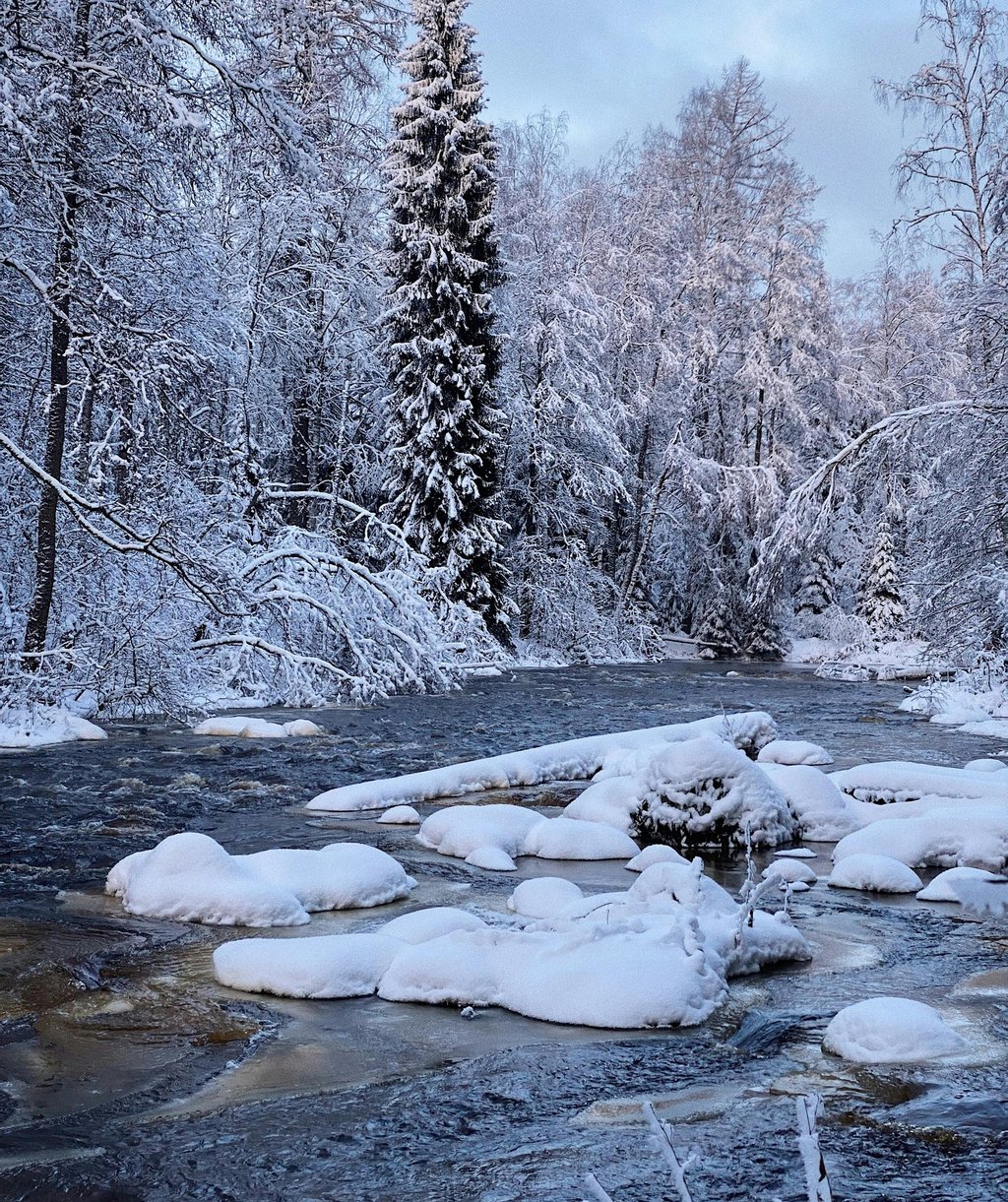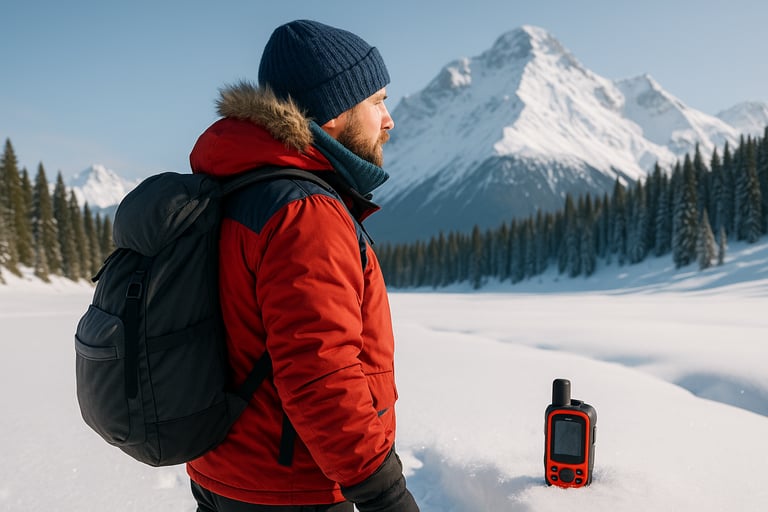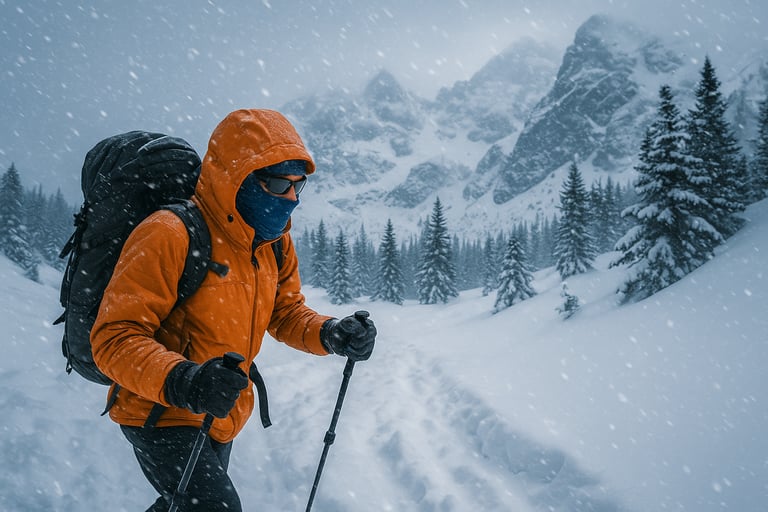Layering for Survival: How to Dress for Extreme Cold in the Wilderness
Learn how to dress for extreme cold with this essential survival layering guide. Discover how to stay warm, dry, and safe using the right clothing systems for cold weather survival in the wild.


Layering for Survival: How to Dress for Extreme Cold in the Wilderness
Why Proper Layering Can Save Your Life in the Cold
Dressing properly in freezing conditions is about much more than comfort, it’s a core survival skill. In the wilderness, cold weather can turn deadly fast. The right layering system doesn’t just help you stay warm; it also helps regulate your body temperature, manage sweat, and protect you from wind and moisture — all critical for avoiding hypothermia.
Understanding how to build an effective clothing system for cold weather means you can adapt to sudden changes in temperature, activity level, or exposure. This guide will walk you through how to layer for survival so you’re prepared when conditions get harsh.
The Three-Layer System Explained
At the heart of cold weather survival clothing is the three-layer system. This approach isn’t just for alpine climbers, it’s the gold standard for anyone spending time outdoors in freezing temperatures. The three layers include the base layer, the insulating layer, and the outer shell. Each plays a distinct role in keeping you safe and comfortable.
The goal is to allow flexibility throughout the day. You might remove or add layers depending on how active you are, how windy it is, or whether you’re sheltering or moving. This system works whether you’re hiking, camping, hunting, or dealing with an emergency in the backcountry.
Base Layer: Moisture Management Is Key
The base layer is the one closest to your skin, and its main job is to wick sweat away. Even in extreme cold, your body produces sweat when active and if that moisture stays on your skin, it can cool you rapidly once you stop moving. This is a fast track to hypothermia.
Choose a base layer made from synthetic fabrics like polyester or natural materials like merino wool. Both wick moisture well and dry quickly. Avoid cotton, it holds moisture and will keep you cold and wet.
Understanding the early signs of hypothermia and frostbite is critical here, especially if you're sweating then cooling too quickly.
Insulation Layer: Trap Your Body Heat
Next comes the insulating layer, which is responsible for retaining the heat your body naturally produces. This can be a fleece pullover, down jacket, or synthetic puffy layer — anything that creates pockets of warm air between you and the cold.
If you're moving a lot, a lighter insulation layer might be enough. But when you're staying still, like when sleeping or waiting out bad weather, a thicker jacket or additional layer might be necessary. Down is warmer and packs down small but loses performance when wet, while synthetic insulation still retains warmth even in damp conditions.
A well-built bough bed shelter beneath you can also help reduce the need for heavier clothing layers while resting.
Outer Layer: Protect Yourself from Wind and Water
The outer shell is your armor against the elements. It should be waterproof or at least water-resistant and also block wind. A good shell keeps snow, rain, and biting winds from cutting through your insulation, helping you stay dry and retain body heat.
Look for jackets or pants with ventilation zippers or breathable materials, especially if you’re active. Trapping too much heat can cause sweat buildup so the outer layer must balance protection and ventilation. If your outer layer fails in a blizzard or downpour, the rest of your system will too.
Don’t Forget Your Extremities
Hands, feet, and your head lose heat quickly and need special attention. Wear moisture-wicking socks with insulating layers on top, waterproof boots, insulated gloves or mittens, and a warm hat that covers your ears. A neck gaiter or balaclava can help retain heat and shield your face from windburn or frostbite.
Multiple sock layers can help, but make sure they don't restrict blood flow. If your boots are too tight, circulation will suffer and your feet will actually get colder. Keep gear dry, and rotate items when possible to stay comfortable and safe.
This is especially important in survival situations where you may not have backup clothing, so be sure your wilderness survival kit includes extra dry socks, gloves, and thermal liners whenever possible.
Adjust as You Go: Layering Is Dynamic
The beauty of the three-layer system is flexibility. You can peel off the insulating layer during intense activity or zip everything up when you’re static. Learning when and how to adjust your layers will prevent overheating and sweating, which is just as important as avoiding cold.
Carry extra layers if you're unsure what conditions you’ll face, and store them in waterproof bags. Even a lightweight emergency layer can be a lifesaver when temperatures drop unexpectedly.
Final Thoughts on Dressing for the Cold
Layering for survival isn’t about bulky clothes or guesswork. It’s a proven strategy for managing your body’s temperature and staying dry and safe in extreme cold. By understanding the role of each layer and learning how to adapt your system to changing conditions, you can confidently face freezing wilderness environments.
Whether you’re camping in snow, navigating icy trails, or preparing for a winter survival scenario, proper clothing could be the most important gear you have.




© 2025. All rights reserved About | Privacy Policy | Terms and Conditions | Affiliate Disclosure | Disclaimer


